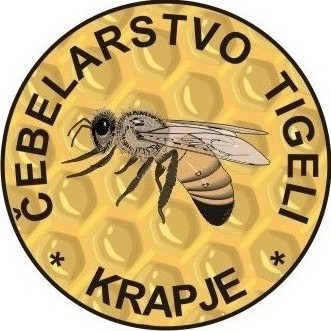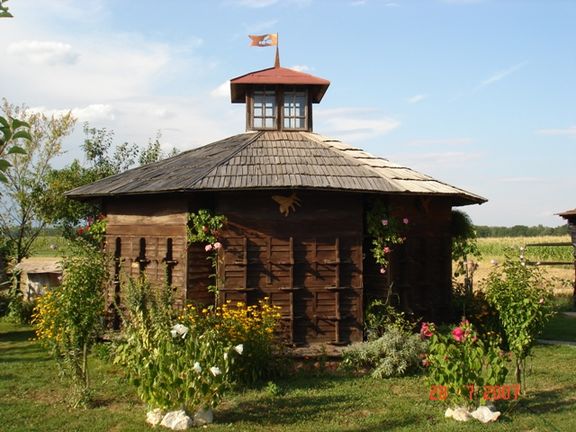|
|
| Line 1: |
Line 1: |
| | {{Article | | {{Article |
| − | | status = TOPROOFREAD NIFERTIK! | + | | status = NIFERTIK! |
| | | maintainer = Ivan Pirnat | | | maintainer = Ivan Pirnat |
| | }} | | }} |
| Line 22: |
Line 22: |
| | | | |
| | {{Teaser| | | {{Teaser| |
| − | The [[Apiculture Museum, Veržej]] was established in [[established::1997]] by beekeeper Drago Šalamun. In the course of many years of collecting beekeeping exhibits, the previous owner Drago Šalamun also acquired in 1996 an original octagonal apiary which dates from the late 19th century. The apiary has a skylight for ventilation and lighting and contains 84 hives, joined in units of six hives each, that is the old NASIER System. It was made by joiner master Pok from Tišina for landowner and teacher Evgen Antauer from Tropovec. In 1945 it was bought by farmer Alojz Šeruga. Drago Šalamun bought it in a bad state, renovated it and established a museum. After his death his wife Marta inherited it. Museum is now managed by Jožef and Dragica Tigeli. Visitors can watch the activities in a beehive through glass sections. They have 50 bee families. Oldest beehive in the collection is supposed to be around 300 years old. It Is an open air museum where visitors can follow the work of bee-keeping, see collection, and have workshop of bee wax sculpting or crafting. There also various products,all sorts of honey, bee wax products, propolis, honey wine and spirits. They won many prestigious awards for honey making on international fairs in Slovenia where competition is quite tough. Visit is by appointment. | + | The [[Apiculture Museum, Veržej]] was established in [[established::1997]] by beekeeper Drago Šalamun. As the previous owner, over the course of many years of collecting beekeeping exhibits, in 1996 he also acquired an original octagonal apiary which dates from the late 19th century. The apiary has a skylight for ventilation and lighting and contains 84 hives, joined in units of 6 hives each, that is the old NASIER System. It was made by joiner master Pok from Tišina for landowner and teacher Evgen Antauer from Tropovec. In 1945 it was bought by farmer Alojz Šeruga. Drago Šalamun bought it in a bad state, renovated it and established a museum. After his death his wife Marta inherited it. The museum is now managed by Jožef and Dragica Tigeli. |
| | + | |
| | + | By appointment, visitors can watch the activities in a beehive through glass sections. Fifty bee families are contained in the museum. The oldest beehive in the collection is supposed to be around 300 years old. It is an open air museum where visitors can follow the work of bee-keeping, see the collection, and participate in bee wax sculpting or crafting workshops. There also various products, all sorts of honey, bee wax products, propolis, honey wine and spirits. The museum has won many prestigious awards for honey making on international fairs in Slovenia, a territory known for its tough competition. |
| | | | |
| | }} | | }} |
| | ==See also== | | ==See also== |
| | *[[Radovljica Apiculture Museum]] | | *[[Radovljica Apiculture Museum]] |
| | + | |
| | ==External links== | | ==External links== |
| | *[http://www.cebelarski-muzej.si/ Apiculture museum Krapje official website] (in Slovenian) | | *[http://www.cebelarski-muzej.si/ Apiculture museum Krapje official website] (in Slovenian) |
The Apiculture Museum, Veržej was established in 1997 by beekeeper Drago Šalamun. As the previous owner, over the course of many years of collecting beekeeping exhibits, in 1996 he also acquired an original octagonal apiary which dates from the late 19th century. The apiary has a skylight for ventilation and lighting and contains 84 hives, joined in units of 6 hives each, that is the old NASIER System. It was made by joiner master Pok from Tišina for landowner and teacher Evgen Antauer from Tropovec. In 1945 it was bought by farmer Alojz Šeruga. Drago Šalamun bought it in a bad state, renovated it and established a museum. After his death his wife Marta inherited it. The museum is now managed by Jožef and Dragica Tigeli.
By appointment, visitors can watch the activities in a beehive through glass sections. Fifty bee families are contained in the museum. The oldest beehive in the collection is supposed to be around 300 years old. It is an open air museum where visitors can follow the work of bee-keeping, see the collection, and participate in bee wax sculpting or crafting workshops. There also various products, all sorts of honey, bee wax products, propolis, honey wine and spirits. The museum has won many prestigious awards for honey making on international fairs in Slovenia, a territory known for its tough competition.
See also
External links




